Scientists say breakthrough could shorten the time needed to map the Milky Way from millennia to less than a decade.


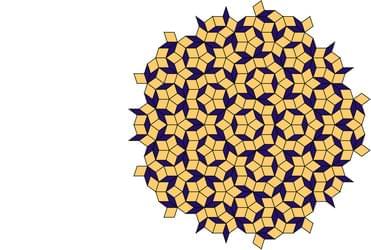
Large-scale obstacles to crystal growth can throw the whole lattice off kilter, but quasicrystals can accommodate them without losing their atomic-scale order.
When a growing crystal encounters an obstacle, the orderly array of atoms may have to adjust in ways that create lattice defects or large-scale rearrangements. But a research team has found through experiments that peculiar materials called quasicrystals can take such disruptions in stride [1] The quasicrystalline lattice, which is orderly but not periodic, can accommodate obstacles without sacrificing its order, thanks to a type of rearrangement unique to quasicrystals. The work suggests the possibility of making quasicrystalline metal alloys that are more durable than conventional alloys.
Quasicrystals, discovered in 1984, are typically compounds composed of metals such as aluminum, nickel, and manganese. X-ray diffraction seems to show that their atomic lattices have symmetries that aren’t permitted in conventional crystals, such as pentagonal or decagonal symmetry. But these symmetries can exist in small regions because quasicrystals are not conventional crystals—you can’t shift the atomic lattice in space and then superimpose it exactly on the original lattice.
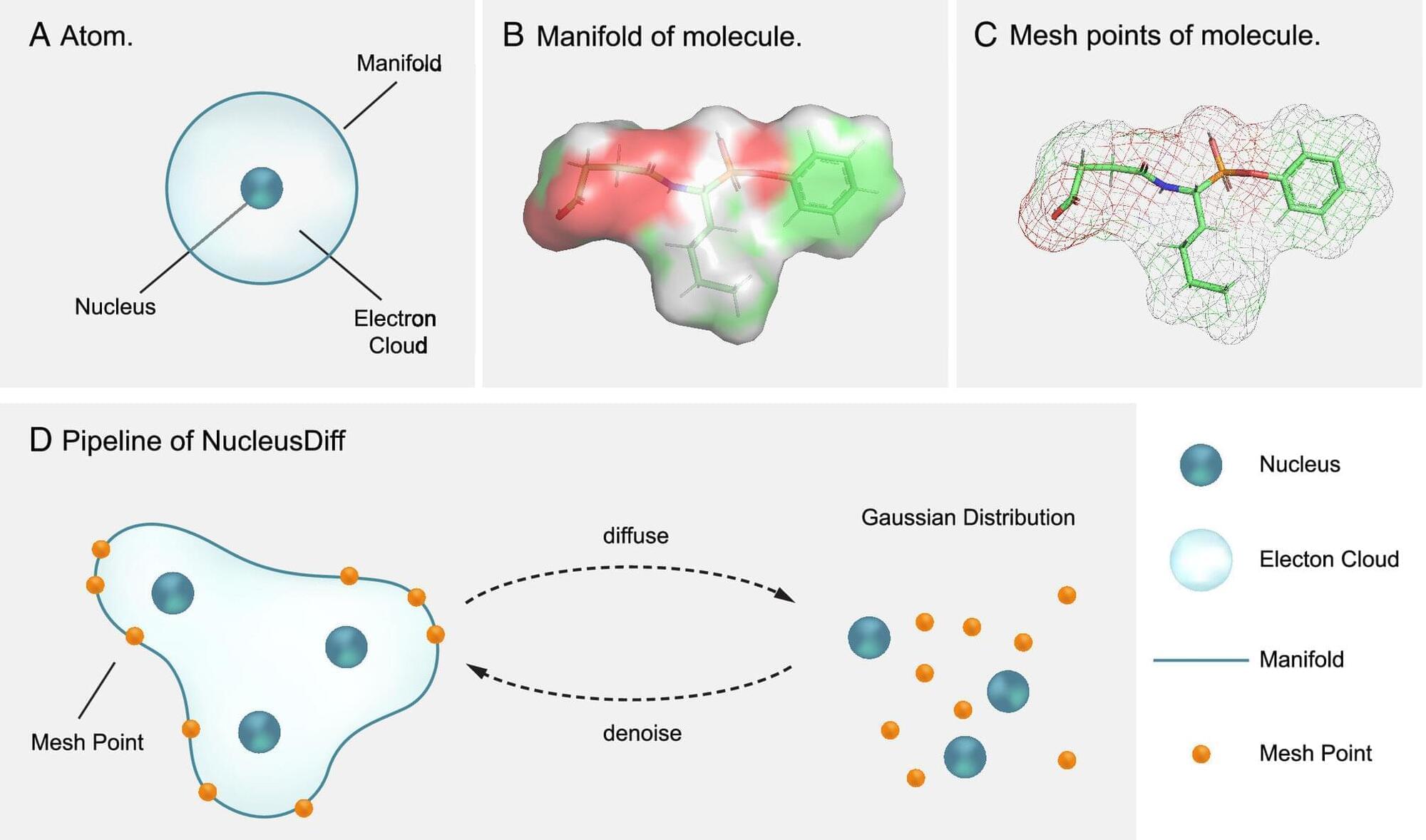
When machine learning is used to suggest new potential scientific insights or directions, algorithms sometimes offer solutions that are not physically sound.
Take, for example, AlphaFold, the AI system that predicts the complex ways in which amino acid chains will fold into 3D protein structures. The system sometimes suggests “unphysical” folds—configurations that are implausible based on the laws of physics —especially when asked to predict the folds for chains that are significantly different from its training data.
To limit this type of unphysical result in the realm of drug design, Anima Anandkumar, Bren Professor of Computing and Mathematical Sciences at Caltech, and her colleagues have introduced a new machine learning model called NucleusDiff, which incorporates a simple physical idea into its training, greatly improving the algorithm’s performance.
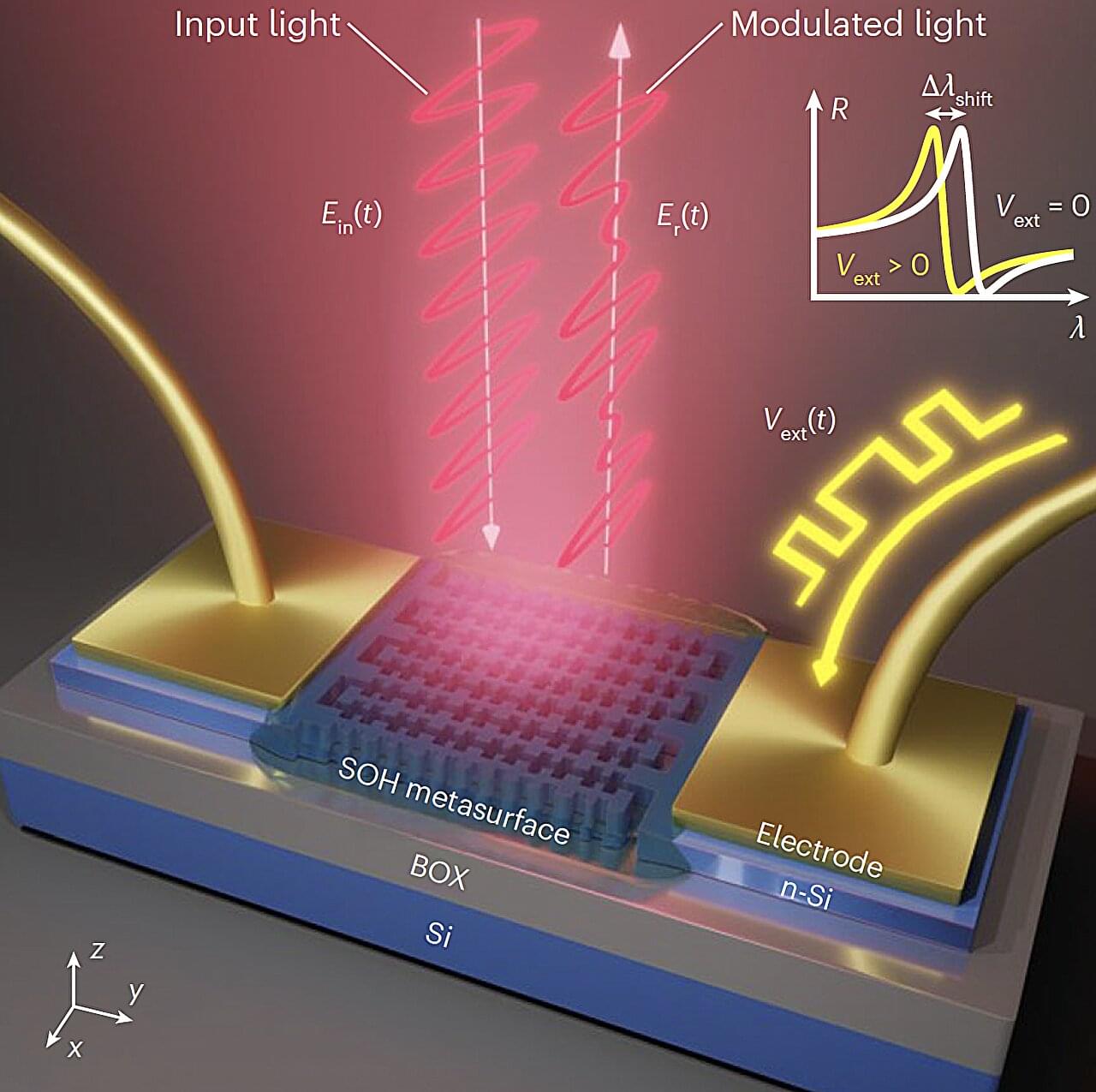
Metasurfaces are two-dimensional (2D), nanoengineered surfaces that interact strongly with electromagnetic waves and can control light with remarkable precision. These ultra-thin layers can be used to develop a wide range of advanced technologies, including optical photonic, sensing and communication systems.
Active metasurfaces, whose electromagnetic response can be dynamically tuned in real-time, are particularly promising for advanced real-world applications, particularly for the development of reconfigurable antennas, highly sensitive sensors and other adaptive systems. These metasurfaces can also serve as optical modulators, devices that adjust the intensity or phase of light and thus enable the encoding of information onto light beams.
While engineers have introduced various metasurface-based optical modulators over the past few years, most devices developed so far require high-voltage electrical signals to operate. This means that to noticeably change the optical response of the metasurfaces they are based on, users need to apply a strong electrical field to them.
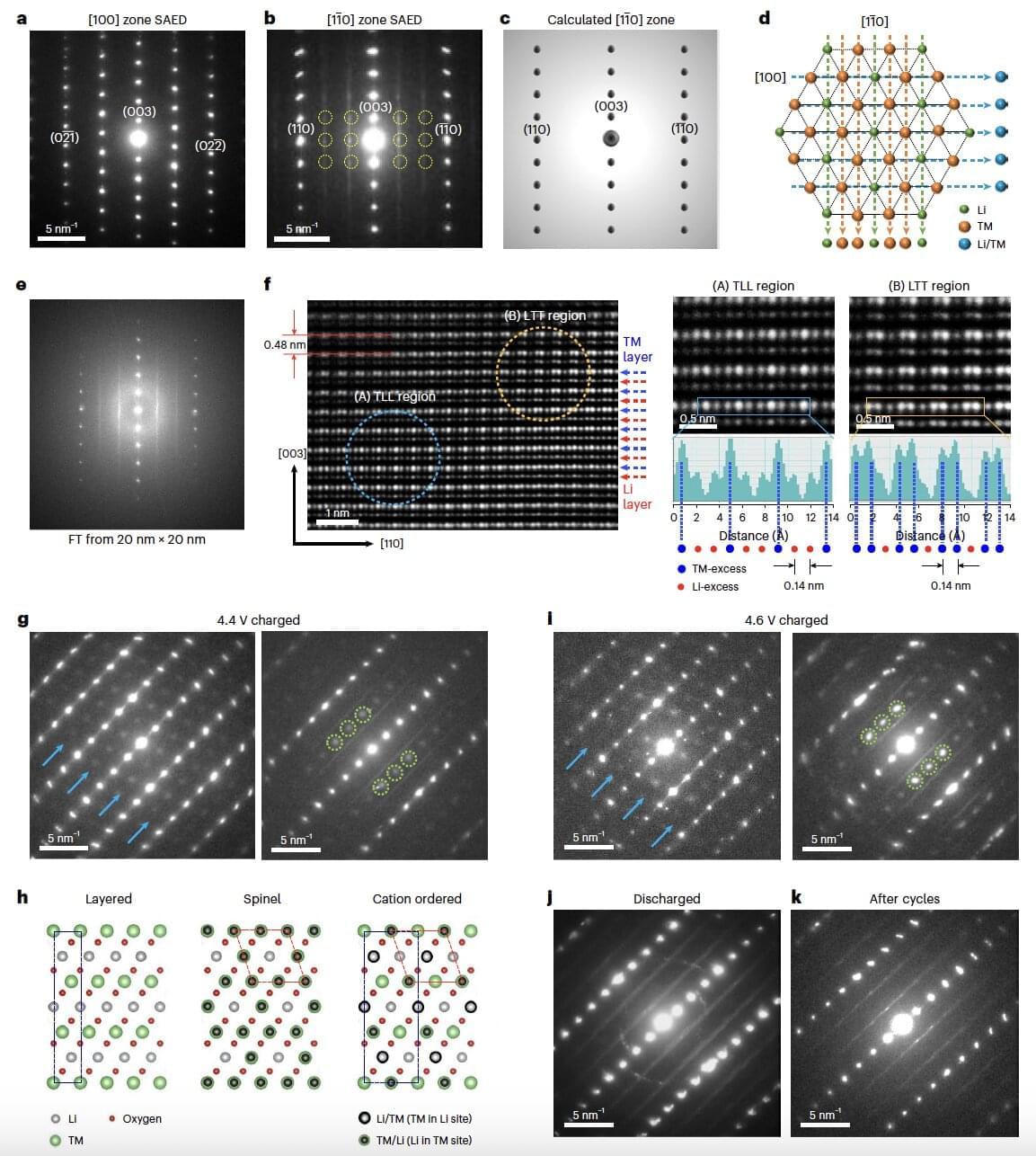
Lithium-ion batteries (LiBs) remain the most widely used rechargeable batteries worldwide, powering most portable and consumer electronics. LiBs are also used to power most electric and hybrid vehicles, which are predicted to become increasingly widespread over the next decades.
Despite their good performance and large-scale adoption, LiBs still primarily rely on cathode materials based on nickel (Ni) and cobalt (Co). Yet the processes required to source both these metals are known to be destructive for natural environments, while also leaving a high carbon footprint and requiring significant water.
Moreover, most of the cobalt used worldwide originates from the Democratic Republic of the Congo (DRC), where unsafe mining conditions and child labor are still common. Over the past decades, energy researchers have been trying to identify cathode materials that can be sourced safely and sustainably, while matching the performance of Ni and Co-based cathodes.

Grid cells are a class of specialized neurons in a brain region called the entorhinal cortex, which is known to support spatial navigation and some memory processes. Past neuroscience studies have found that as humans and other animals move in their surroundings, these cells fire following a grid-like pattern, creating a sort of internal map of the environment.
Researchers at the Medical Faculty of Heidelberg University, the German Cancer Research Center and EBRI recently carried out a study aimed at shedding new light on the processes via which grid cells encode an animal’s position in space and contribute to spatial navigation. Their findings, published in Nature Neuroscience, suggest that rather than creating and retaining a single global map, these cells produce multiple local maps that can guide the future behavior of animals in their surrounding space.
“Soon after the discovery of grid cells by the group of May-Britt and Edvard Moser, it was proposed that these neurons might support path integration,” Kevin Allen, senior author of the paper, told Medical Xpress. “In this fundamental navigation process, an animal estimates its position by continuously integrating self-motion cues, even in the absence of external landmarks. However, most previous studies of grid cells were conducted in environments rich in external cues, making it difficult to isolate the path-integration processes.”

University of North Carolina at Charlotte’s School of Nursing, collaborating with Harvard’s Human Flourishing Program, reports that adolescents who report transformative religious or spiritual experiences show both greater volunteering and voting in early adulthood alongside elevated loneliness and PTSD.
Large national surveys have linked religious or spiritual involvement with health, yet longitudinal evidence on life-changing experiences remains sparse.
Previous research has associated religious or spiritual involvement with positive health indicators and lower stress, while qualitative and clinical literature has described both self-destabilizing elements and intensified civic engagement and social connectedness.

A new study led by psychologists from UNSW Sydney has provided the strongest evidence yet that auditory verbal hallucinations—or hearing voices—in schizophrenia may stem from a disruption in the brain’s ability to recognize its own inner voice.
In a paper published today in the journal Schizophrenia Bulletin, the researchers say the finding could also be an important step toward finding biological indicators that point to the presence of schizophrenia. This is significant, as there are currently no blood tests, brain scans, or lab-based biomarkers—signs in the body that can tell us something about our health—that are uniquely characteristic of schizophrenia.
Professor Thomas Whitford, with the UNSW School of Psychology, has been examining the role of inner speech in the cognition of healthy people and people living with schizophrenia spectrum disorders for some time.

Heart disease, cancer, asthma, and diabetes: All are chronic or non-communicable diseases (NCD), which accounted for about 75% of non-pandemic related deaths in 2021. They may result from genetic, environmental, and behavioral factors, or a combination thereof. But can other factors also influence disease risk?
Now, a new Frontiers in Medicine study has investigated the relationship between happiness and health to find out if happier always means healthier and to determine if happiness and co-occurring health benefits are linear or follow a specific pattern.
“We show that subjective well-being, or happiness, appears to function as a population health asset only once a minimum threshold of approximately 2.7 on the Life Ladder scale is surpassed,” said first author Prof Iulia Iuga, a researcher at 1 Decembrie 1918 University of Alba Iulia. “Above this tipping point, increased happiness is associated with a decrease in NCD mortality.”
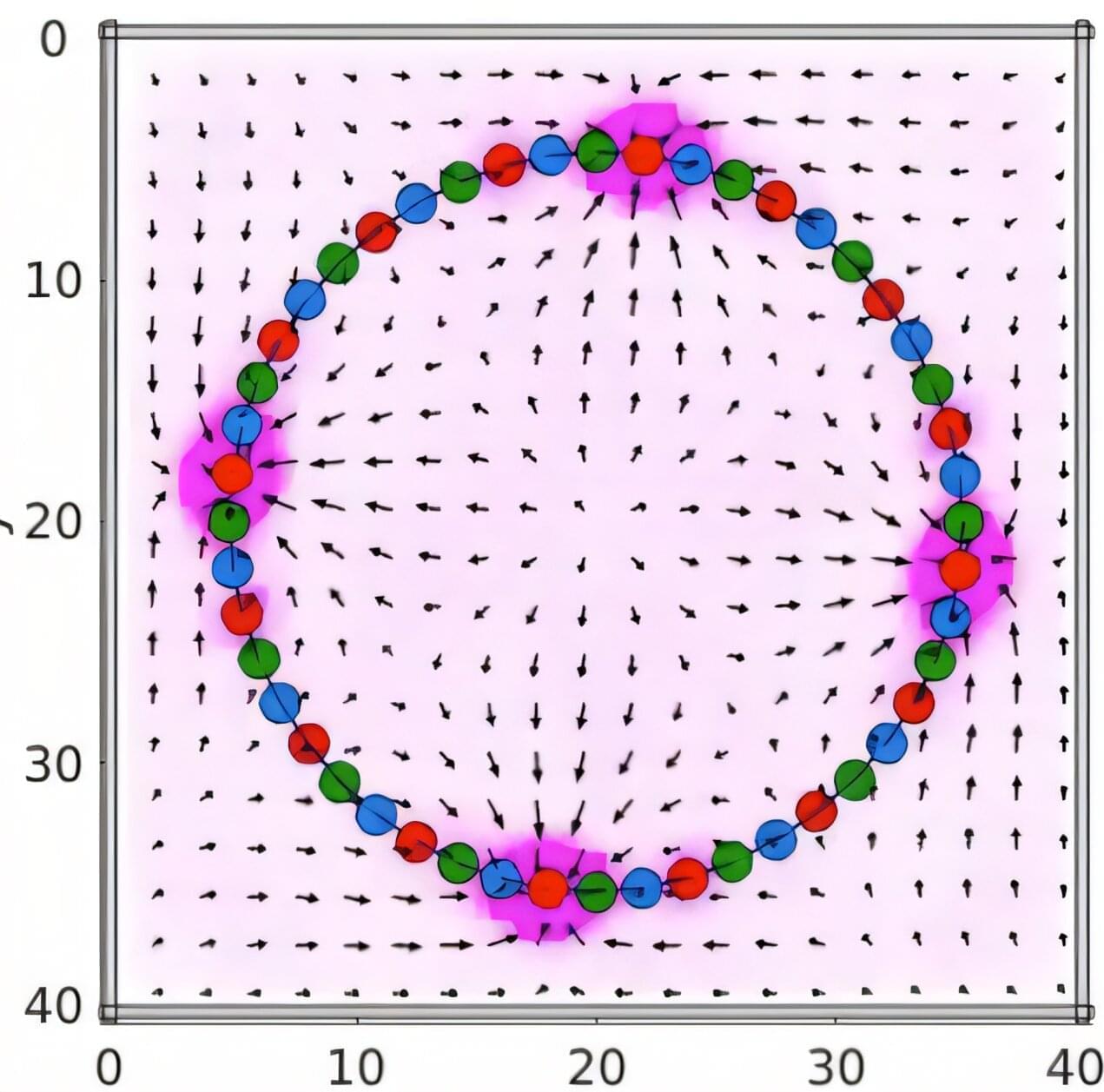
What if a soft material could move on its own, guided not by electronics or motors, but by the kind of rudimentary chemical signaling that powers the simplest organisms? Researchers at the University of Pittsburgh Swanson School of Engineering have modeled just that—a synthetic system that on its own directly transforms chemical reactions into mechanical motion, without the need for the complex biochemical machinery present in our bodies.
Just like jellyfish, some of the simplest organisms do not have a centralized brain or nervous system. Instead, they have a “nerve net” which consists of dispersed nerve cells that are interconnected by active junctions, which emit and receive chemical signals. Even without a central “processor,” the chemical signals spontaneously travel through the net and trigger the autonomous motion needed for organisms’ survival.
In a study published in PNAS Nexus, Oleg E. Shklyaev, research assistant, and Anna C. Balazs, Distinguished Professor of Chemical and Petroleum Engineering and the John A. Swanson Chair of Engineering, have developed computer simulations to design a soft material with a “nerve net” that links chemical and mechanical networks in a way that mimics how the earliest and simplest living systems coordinate motion.